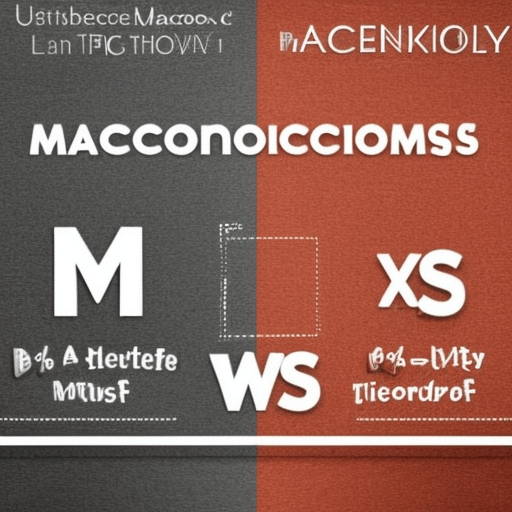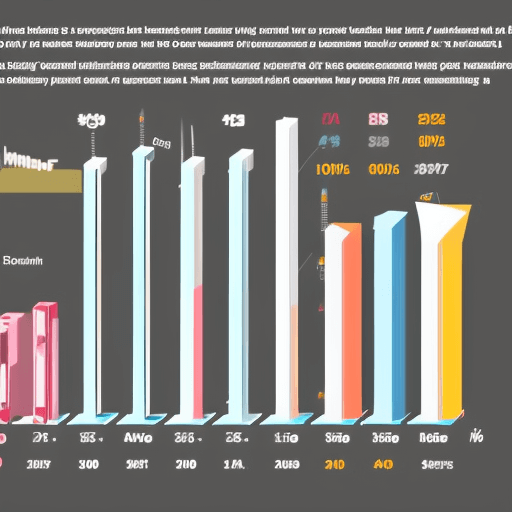What is the difference between micro and macro economics?
Economics is the study of how people use resources to produce goods and services.
There are two main branches of economics: micro and macro.

Micro economics focuses on individual economic decisions, while macro economics looks at the economy as a whole.
Explain it to a child
Micro economics focuses on smaller, specific parts of the economy. Macro economics focuses on the economy as a whole.
The main difference between micro and macro economics is that micro economics focuses on specific economic units, while macro economics looks at the economy as a whole.
The difference between micro and macro economics
Microeconomics is the study of how individuals and firms make decisions to allocate limited resources. It focuses on factors such as prices, interest rates, and income.
In contrast, macroeconomics is the study of the economy as a whole. It looks at factors such as inflation, unemployment, and economic growth.

Both micro and macro economics are important for understanding how the economy works. However, they take different approaches to studying economic activity.
Microeconomics focuses on the decisions of individual actors, while macroeconomics looks at the economy as a whole.
- As a result, each perspective can provide insights that the other cannot.
- For this reason, it is important to understand both micro and macro economics.
What is the example of microeconomics and macroeconomics?
Microeconomics and macroeconomics are both important fields of study within economics.
Microeconomics focuses on individual economic units, such as households and businesses, and how they make decisions.

Macroeconomics, on the other hand, looks at the economy as a whole and analyses issues such as inflation, unemployment, and economic growth.
Both microeconomics and macroeconomics are essential for understanding how economies work, but they each have their own strengths and weaknesses.
- For example, microeconomic analysis is often very technical and can be difficult to apply to real-world situations.
- Macroeconomic analysis, on the other hand, is more broad-based and can be easier to understand.
Macroeconomics examines economic indicators such as employment, inflation, and Gross Domestic Product (GDP). It also looks at government policies that can impact the economy, such as taxation and interest rates.
The importance of understanding the difference between micro and macro economics
Economics is the study of how people use limited resources to satisfy their unlimited wants and needs.

It is a social science that focuses on the production, distribution, and consumption of goods and services.
Economics can be divided into two main branches: microeconomics and macroeconomics.
Microeconomics focuses on individual consumers and businesses, while macroeconomics looks at the economy as a whole.
Both micro and macro economics are important for understanding how the economy works.
Microeconomics helps us understand how individuals make decisions about what to buy, how much to save, and how much to invest.
It also explains how businesses set prices for their products and how they decide how much to produce. Macroeconomics, on the other hand, looks at the big picture.
By understanding both micro and macro economics, we can gain a better understanding of how the economy works and make more informed decisions about our own personal finances.
What is micro economics
Micro economics is the study of how individuals and firms make decisions to allocate their resources.
It focuses on the behavior of small units, such as households and businesses.
Micro economists typically use models and theories to analyze how economic decisions are made and how these decisions impact the prices of goods and services in the marketplace.
In recent years, micro economics has become increasingly important as more businesses have turned to data-driven decision-making.
By understanding micro economic principles, businesses can make better decisions about pricing, investment, and other strategic choices.
In addition, micro economics can help policymakers design more effective policies to promote economic growth and stability.
As the world economy becomes increasingly complex, the role of micro economics is likely to become even more important.
What is macro economics
Macroeconomics is the study of the economy as a whole.
It looks at economic growth and development and examines how national income is determined.
Macroeconomics also looks at inflation, unemployment, and other economic indicators. The goal of macroeconomics is to ensure that the economy is stable and prosperous.
By understanding how the economy works, policymakers can make decisions that will promote economic growth and reduce unemployment.
- In recent years, macroeconomics has become increasingly important as countries have struggled to recover from the global financial crisis.
- As a result, macroeconomists play an important role in shaping economic policy.
Article Sources
Jacks of Science sources the most authoritative, trustworthy, and highly recognized institutions for our article research. Learn more about our Editorial Teams process and diligence in verifying the accuracy of every article we publish.
